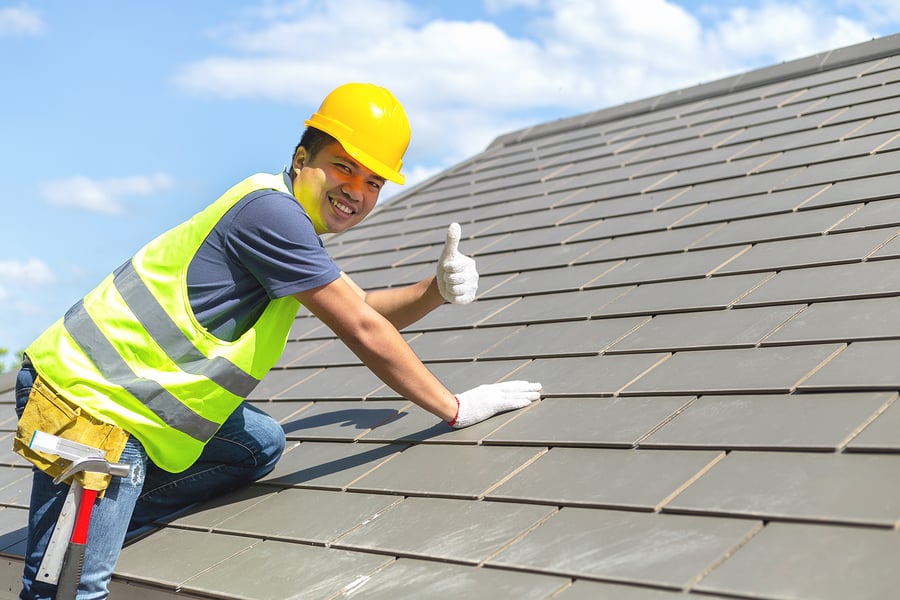Just How to Assess Different Roof Covering Alternatives for Your Building Needs
Evaluating roof choices for your structure needs a detailed approach that takes into consideration different factors such as the intended usage of the framework, local climate problems, and product characteristics - Perrysburg Roofer. It is necessary to consider the advantages and drawbacks of various roofing types, from asphalt shingles to steel and clay ceramic tiles, while likewise factoring in preliminary prices and lasting upkeep.
Analyzing Your Building's Demands
To properly review roof covering choices, start by extensively analyzing your structure's demands. Beginning by thinking about the building's intended use, as various structures may demand differing roofing specs. Property roofs typically focus on looks and insulation, while industrial buildings might focus on sturdiness and load-bearing ability.
Following, assess the regional environment conditions that will certainly influence roofing efficiency. Aspects such as temperature level variations, precipitation degrees, and wind patterns can influence product selection and layout. A roof that excels in a temperate environment might not perform also in locations susceptible to hefty snowfall or extreme heat.
Furthermore, examine the structural honesty of your structure. Ensure that the existing framework can support the selected roofing materials, particularly if considering much heavier alternatives. It is also critical to assess any kind of local structure codes or laws that may determine specific needs for roof.

Comparing Roof Materials
As soon as a thorough analysis of your building's requirements has been finished, the following action involves comparing different roofing materials. Each product provides unique benefits and downsides, making it vital to straighten your selection with your specific needs and scenarios.
Asphalt roof shingles are commonly recognized for their cost and ease of setup, making them a popular alternative for household buildings. On the various other hand, metal roof covering, known for its longevity and longevity, can withstand harsh weather but might include a higher preliminary financial investment.
Clay and concrete tiles give exceptional thermal insulation and aesthetic appeal, particularly for Mediterranean-style design, yet they require an even more robust architectural support because of their weight. Wood trembles deal an all-natural appearance and great insulation properties but might require a lot more maintenance and are vulnerable to fire hazards.
Assessing Price and Budget
Analyzing your roof covering options necessitates a careful examination of price and spending plan considerations. The total budget plan for a roof job consists of a number of elements, including material prices, labor costs, maintenance, and potential lasting cost savings. It is vital to establish a clear budget before checking out particular roofing products, as this will certainly assist the decision-making process and assist you prevent overspending.
Begin by acquiring quotes from numerous contractors to understand labor costs in your area. Make certain that these quotes include all required services, such as elimination of the old roof, installment, and any extra features, like insulation or ventilation improvements - Roofer. Next, examine the expense of numerous roof materials, taking into account both preliminary installment prices and anticipated life-span

Understanding Power Performance
Energy effectiveness plays a crucial role in the choice of roof covering products and systems, considerably affecting both energy usage and total convenience within a published here structure. An appropriate roofing system can improve thermal efficiency, reducing the need for heating and cooling down systems, which in turn reduces energy expenses and decreases ecological effect.
When assessing roof covering alternatives, take into consideration materials that mirror instead than absorb warm. In addition, proper insulation and air flow are crucial to maximize the energy efficiency of the whole roofing system.
One more vital factor is see it here the roof's longevity and upkeep demands. Long lasting materials that require much less regular replacement contribute to long-term power savings. The energy effectiveness of a roof system can likewise be analyzed through its conformity with established sustainability ratings such as ENERGY CELEBRITY or LEED.
Considering Aesthetic Appeal
A roofing system's aesthetic charm substantially affects the total appearance of a building, enhancing its architectural style and improving aesthetic allure. Perrysburg Roofer. When evaluating roofing options, it is important to consider just how the chosen product, shade, and style will integrate with the existing framework and area. A properly designed roofing system can elevate even the most basic of structures, changing them right into aesthetic prime focus
Various roof covering materials offer various visual top qualities. As an example, typical tiles might stimulate a classic appeal, while metal roof covering can impart a modern-day, sleek appearance. Furthermore, the shade of the roof covering material plays a vital duty; lighter shades can make a structure show up more sizable, while darker tones might produce a cozier setting.
Additionally, architectural elements, such as dormers and eaves, can improve the roof's aesthetic effect. It is advisable to seek advice from with professional designers or engineers to make certain the selected roof option aligns with the overall style intent. Ultimately, a roofing system should not only offer practical benefits but also add favorably to the building's visual, mirroring the proprietor's preference and the personality of the surrounding environment.
Conclusion
